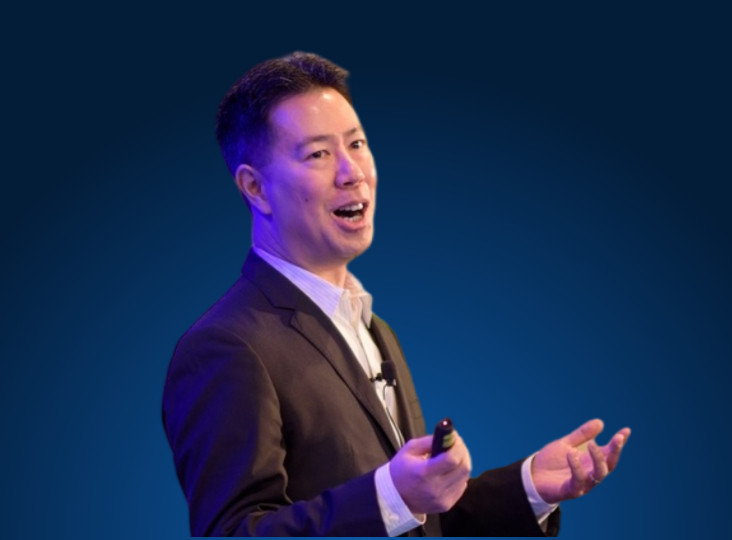Torres’s “Fifth Revolution” suggests that relational experiences will trump transactional ones in the future
NRC Health’s Patient No Longer podcast features healthcare leaders who inspire a positive shift in the customer experience and Human Understanding. The latest episode, “The 5th Revolution: The Process of Re-Humanizing Healthcare” features Jorge Torres, Culture Architect for Mount Sinai Medical Center and co-author of Hardwiring Magic.
Host Ryan Donohue, Solutions Expert and Strategic Advisor with NRC Health, brought Torres’s career-long curiosity about behavior and processes to the forefront as they discussed the cost of technology when it’s brought into a transactional society instead of a purpose-driven community.
Torres said that organizations are already overwhelmed with challenges but must find a way to implement simple but systematic tools that will support the deep transformation from transactions to transcendental relations. Effective Human Understanding, along with simple operational and leadership tools, can prepare healthcare organizations to engage and retain employees and improve and sustain overall performance results.
“Organizations that can switch to create a strong sense of purpose, a strong sense of relevance, relationship, and personal time, are the ones that will survive by attracting and retaining employees, which is one of the biggest issues healthcare is having right now,” he said.
Torres’s book Hardwiring Magic discusses the so-called Fifth Industrial Revolution—the Humanistic revolution—as a period that will rehumanize society, elevating technology to serve humanity instead of driving it apart. For example, a good idea for a digital app is one that walks a patient through the hospital campus so that they can arrive on time instead of getting lost in 20 different buildings. “That’s a great tool,” Torres said. “But if I have to call a call center to ask a question and have a robot answer back, sometimes I can feel offended.”
Torres described a recent example of how employees were striving toward a purpose-driven community. After a culture training of new employees, a nurse ran up to Torres and shared that it was her second time working for Mount Sinai. She’d worked there a few years prior and had a great time but was lured away to be a traveling nurse. She’d since gone to many different hospitals before asking herself what she was doing—and realizing that the best place to work was at Mount Sinai, because they treated her like a person there. “She said, ‘I have such a sense of family here—the work was the same before, but it was completely transactional,’” Torres said. “She felt that in this organization, it’s not just a job, it’s a family.”
Donohue and Torres agreed that shifting focus begins with recognizing what the patient and employee want, then designing experiences around them.
“Magic happens when perception is better than expectation,” Torres said. “I realized that Disney’s not magical because of the castles or the princesses—they are really good at execution. Understanding the expectations for customer and employee journeys is important. Hopefully, most organizations are realizing, ‘Hey, we have different types of patients or different types of employees; what are the different types of needs and wants they have?’”
Torres admitted that where most organizations struggle is in getting employees to consistently achieve a service recipe that delivers as much love, care, and dedication as it does process.
“The hardest part is employees behaving as they’re supposed to, following the ‘kitchen recipe’ step by step, without any deviation and with a great attitude,” he said. “That’s what creates that different experience from a patient perspective.”
Torres explained that what he saw in how Disney and the airline industry worked behind the scenes boils down to what you can’t measure. “You don’t track, you don’t control, you don’t improve,” he said. “I can consistently track all the departments and all the units in this hospital. I can measure how many recognitions the leaders are given and how many improvement opportunities there are. The last question our leaders ask is, ‘What is preventing you from doing a good job?’”
He added that it’s through mechanisms like these that he can see the compliance and adherence of different behaviors. For example, he knows that out of the 350 staff members Mount Sinai has on the floor, it may only be two or three people having difficulties. He said that if we have these mechanisms—if we persistently teach and re-teach, both in a group and on a personal basis—we can keep operations from falling and allow for the sustainability of results.
Learn how to start a transformation from the bottom up in this episode of Patient No Longer.
Books you may enjoy that are mentioned in the podcast:
- If Disney Ran Your Hospital: 9½ Things You Would Do Differently, by Fred Lee
- Hardwiring Magic, by Valerie Cockerell, Lee Cockerell, Dan Cockerell, Enrique Sierra, and Jorge Ismael Torres
- The Fourth Industrial Revolution, by Klaus Schwab
- Patient No Longer, by Ryan Donohue and Stephen K. Klasko


